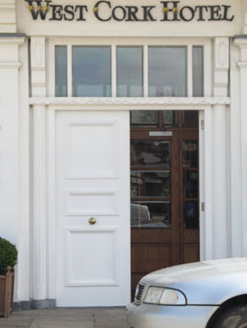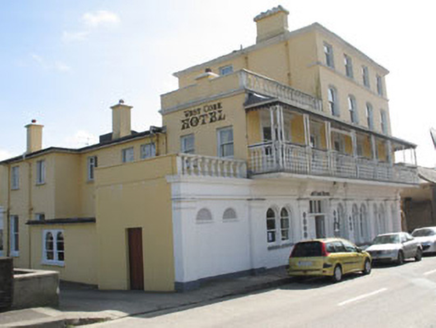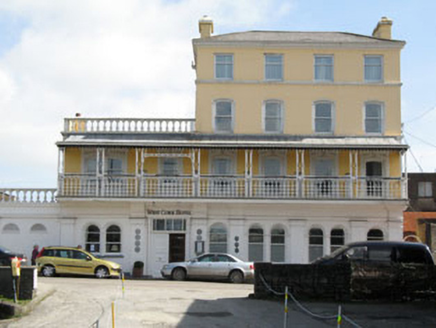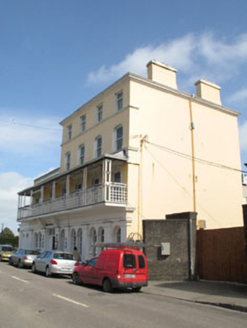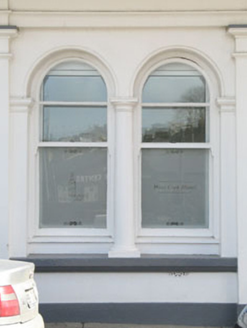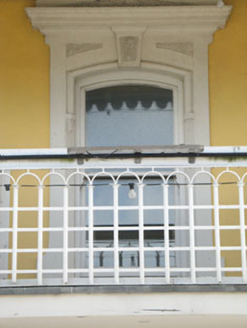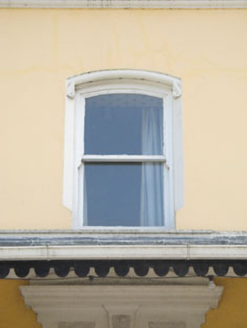Survey Data
Reg No
20841010
Rating
Regional
Categories of Special Interest
Architectural, Artistic
Original Use
Hotel
In Use As
Hotel
Date
1900 - 1905
Coordinates
111904, 33835
Date Recorded
01/04/2008
Date Updated
--/--/--
Description
Detached six-bay four-storey former railway hotel, opened 1902, with later flat-roofed two-bay two-storey block to north, cast-iron verandah addition to front (west) first floor and extensions to east. Now in use as hotel. Hipped slate roof having rendered chimneystacks with uPVC and cast-iron rainwater goods. Parapet of rendered balustrades to two-storey block. Painted smooth rendered walls with moulded stringcourses, pilasters articulating bays and supporting entablature (ground floor) and moulded render sill courses. Paired round-headed openings to ground floor of main and two-storey blocks having rendered sills, two-over-one timber sliding sash windows and moulded render surrounds incorporating engaged column between openings. Segmental-headed openings to first and second floors with one-over one timber sliding sash windows, moulded render surrounds incorporating projecting keystone, cornice and hood moulding motifs. Segmental-headed openings to third floor with one-over one timber sliding sash windows and moulded render surround incorporating scroll motifs. Square-headed door openings with render surround, overlight and double-leaf timber battened doors.
Appraisal
The Ilen Valley Railway from Dunmanway to Skibbereen opened in 1877, and the narrow gauge from Skibbereen to Schull opened in 1886. This striking former railway hotel, opened by John and Annie Murphy, is a notable landmark along the River Ilen at the west entrance to the town. Built alongside the now disused railway line, it serves as a reminder of the prosperity and activity the rail network attracted during its heyday at the turn of the twentieth century. The retention of skilfully crafted timber sliding sash windows and a well-executed decorative cast-iron balcony add distinction and sophistication to the façade. Prominently sited, this eyecatching building is a significant contributor to the architectural heritage of Skibbereen.
